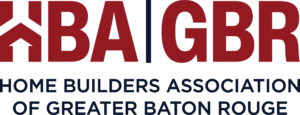
One Central Florida school district is helping to address the workforce shortage by partnering with the local home builders association and its foundation to provide career and technical training alongside its academic curriculum.
Polk County launched Career Academies in its high schools that provide small, personalized learning communities for career and technical training. These programs offer “multiple paths to success,” said Laura Webster, a teacher resource specialist and academy coach of workforce education at Polk County Public Schools.
The construction academies were developed in conjunction with a long-standing partnership between the Polk County School District and the Polk County Builders Association (PCBA) and its PCBA Foundation. There are currently six Polk County high schools utilizing the Home Builders Institute’s PACT curriculum, preparing students for careers in construction. Approximately 900 students graduated from the programs this past school year.
The workforce training program, and collective community support, has helped expand construction education throughout the county. “Polk County is in this together to help the industry and to help our youth,” said Jimmy Giles, lead instructor at Bartow High School’s Academy of Construction.
The students also benefit from the professional connections of their instructors. Although not a requirement, all current construction instructors have industry experience and partnerships with local contractors. “Central Florida is a hotbed for new construction and contractors can’t fill the void,” said Frank Waller, instructor at Lake Region High School. “Many contractors are willing to hire these students right out of high school.”
Construction instructors like Waller and Giles are working to expand mentorship, apprenticeship and employment opportunities for students. The District Advisory Council is also developing the idea of district-wide career fairs.
While COVID-19 disrupted some plans from fully developing this school year, those involved in the programs expect them to be back in full swing next year.
For more information about how NAHB is supporting the industry’s workforce development efforts, visit nahb.org.



 Consistent with NAHB’s forecast, home building data are showing signs of leading an emerging economic rebound. While risks to the outlook remain, particularly in the form of local, rising virus spread and ongoing layoffs, the recession appears to have taken a short and sharp downturn…
Consistent with NAHB’s forecast, home building data are showing signs of leading an emerging economic rebound. While risks to the outlook remain, particularly in the form of local, rising virus spread and ongoing layoffs, the recession appears to have taken a short and sharp downturn…














